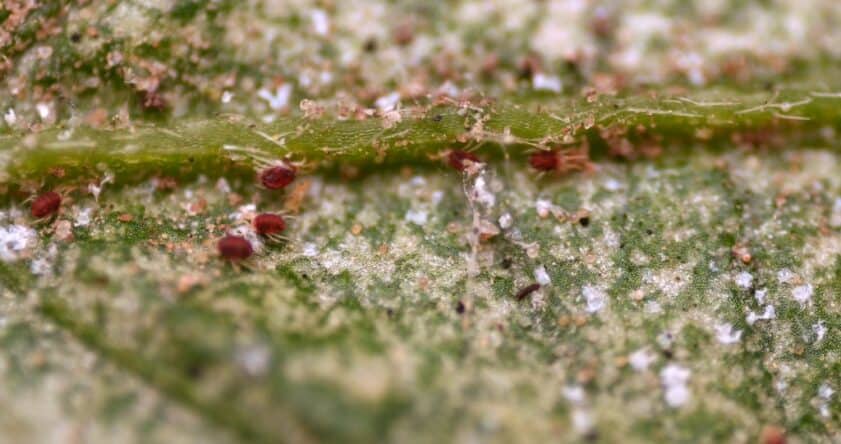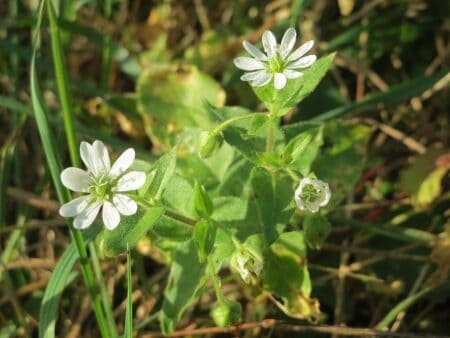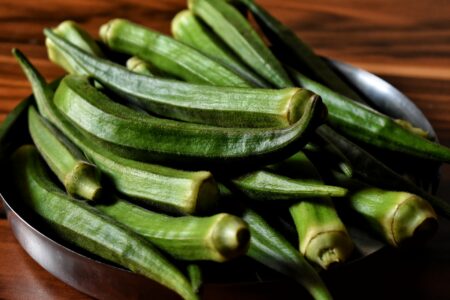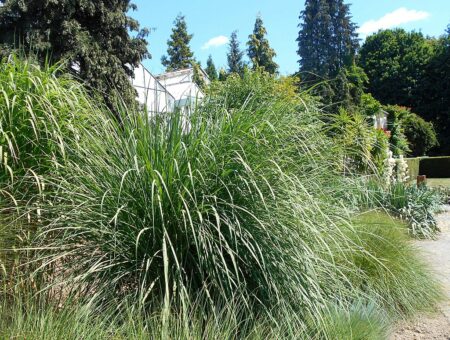As a plant lover, one of the worst things that can happen to your plant is when its leaves start turning yellow or wilted, no matter what you do to help it. It can be frustrating when all you do to improve your plants’ health isn’t working.
Sometimes, it isn’t about what you do or how you do it, but it might be a pest infestation affecting your plant. While several pests or insects can contribute to the general decline in your plant’s health, one common culprit is spider mites.
To the untrained eye, spider mites can go unnoticed, especially when there are just a few. These tiny pests are popularly known for slowly destroying healthy plants. They are so small that they can easily be missed.
A few spider mites spotted aren’t really a cause for alarm. These pests become bothersome when their populations are significantly high. As a result, getting rid of them as soon as they’re noticed is best.
If you see spider mites in your garden, don’t freak out! While they’re annoying and harmful to your plants, they’re easy to manage and destroy.
This article will discuss all you need to know about spider mites. You’ll get information on the signs of spider mites infestation, how they can harm your plants, and how to eliminate them. Let’s jump right unto it!
What Are Spider Mites?
Spider mites are tiny pests that feed on plants. They are often mixed up with and referred to as insects. However, they’re not really insects.
Spider mites are classified as Arachnids. Their name is an apt depiction of how they look – like tiny web-weaving spiders.
If you notice silky webs on the underside of the leaves of your plants, you’ve most likely found a colony of mites.

Most species of spider mites are web-spinning. These web-spinning spider mite species use their silky webs to protect themselves from predators.
These pests have a short reproductive cycle. They reproduce and spread fast by laying tiny round eggs on the underside of leaves. Adult spider mites can develop from eggs in under a week.
This means you can deal with double the number of spider mites initially present in just two weeks. That’s crazy!
While spider mites are not harmful to people, an increase in their population is terrible news for the plants in your indoor or outdoor garden.
Spider mites feed on the cellular compositions of plant leaves. They pierce holes in the leaves and suck out their contents with mouths explicitly made for that purpose. This feeding action destroys plant cells and eventually damages the plant.
Early Signs of Spider Mite Infestation
When there are a few of them, spider mites are difficult to detect because of how small they are.
However, there are always tell-tale signs of their presence if you know what to look for. The following are signs that spider mites have gotten into your garden:
- The most apparent evidence of spider mite infestation is the typical silky webs they produce. If you notice these webs on any part of your plant, you’re likely dealing with spider mites.
- Yellow or white spots all over the surface of leaves could indicate the presence of spider mites. This can further develop into total discoloration of the leaves.
How To Confirm That You’re Dealing With Spider Mites?
Once you notice any of the signs mentioned above, you can do a quick test to check if you have a spider mite problem.
Take a white piece of paper to the bottom of your plant’s leaves and tap repeatedly. If you notice tiny spots that eventually move, your plant is definitely harboring spider mites.
How To Get Rid of Spider Mites?

Fortunately, spider mites are easy to get rid of. No matter the degree of the infestation, as long as your plants aren’t all destroyed, there are ways to eliminate these annoying pests.
What’s more is that you don’t even need to spend so much money to get rid of them, as you can get most of the ingredients you need from your kitchen. Let’s get into it.
Method #1: Spray Plants With Liquid Soap and Water
Spraying your plants with a mixture of soap and water is one quick way of getting rid of spider mites.
Spider mites are so tiny and barely have any weight; as a result, spraying soap and water on them will cause them to stick together and suffocate.
Mix a bit of liquid soap with water in a spray bottle, and spray affected plants periodically till you’re rid of the pests.
Method #2: Use Rubbing Alcohol
This is another method that will do the trick. Rubbing alcohol will dehydrate and kill tiny pests like spider mites. All you need to do is rub it around the leaves and stems of your plants.
However, it would be best to ensure that the rubbing alcohol will not harm your plant, as some plants are more delicate than others.
Method #3: Use Biological Methods
Introducing natural predators is an example of a biological method of killing spider mites. Spider mites serve as food to several harmless insects.

Examples of such insects include; ladybugs, thrips, spined soldier bugs, lacewings, etc. Introducing these natural predators will help eliminate spider mites.
Method #4: Spray Plants With Neem Oil
Neem oil repels a wide variety of pests, spider mites inclusive.
The active compound in Neem oil, known as Azadirachtin, inhibits spider mites from reproducing and feeding, eventually leading to their dying completely.
Neem oil can be dangerous to aquatic life, so you must be careful when using it, especially if there are streams or other water bodies around- you don’t want any of it getting into them.
Conclusion
As a gardener or plant owner, you’re bound to battle with spider mites and other pests at some point, especially if your environment is warm and dusty.
These pests can spread and get out of hand quickly if not controlled. However, with the proper materials and methods (as mentioned in this article), you can get rid of them permanently- your plants will thank you!
















